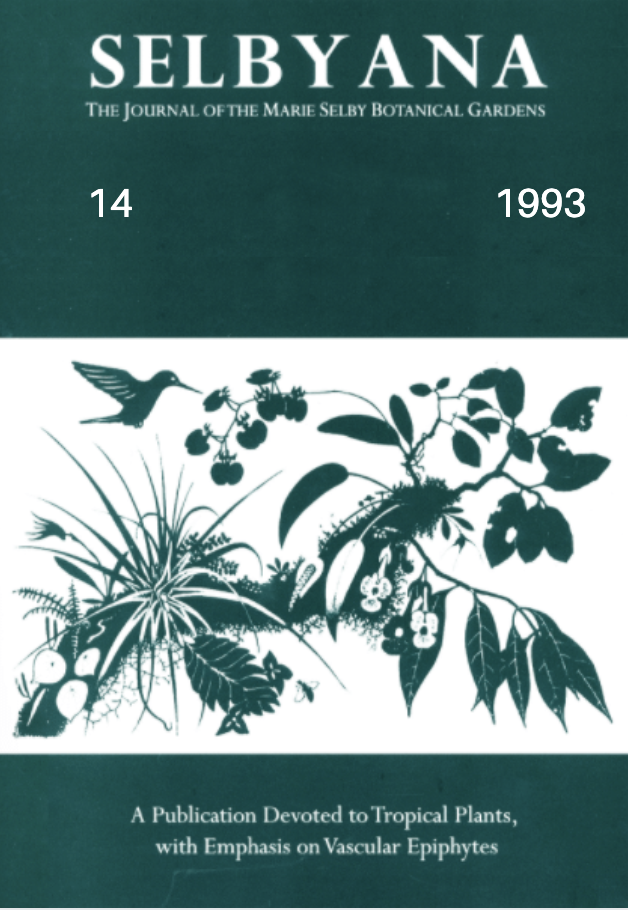Abstract
For the limited number of species studied, the storage characteristics oforchid seeds are
classified as 'orthodox' in the sense that seed longevity is enhanced by reducing moisture contents (from
around 20%, wet basis, to 5%) and decreasing storage temperatures (from 62°C to O°C). When stored dry
at 5-8°C, the time taken for viability to fall to 50% can be 8-14 years, (assuming high initial seed quality).
However, seeds ofCattleya aurantiaca exhibit reduced longevity at 5°C when stored at equilibrium moisture
contents both above and below 5%, indicating that the optimal water status for these seeds during storage
is approximately 30% Lh. (or a water potential of ca. -150 MPa). C. aurantiaca seeds at 2.2 to 5.6%
moisture content (up to 31 % Lh.) generally exhibit reduced longevity at -18°C compared to 5°C, and this
sensitivity to sub-zero storage has been shown by differential scanning calorimetry to coincide with the
presence of the seed lipids in a transitional conformation state. Similar results in the literature for 'dry'
seeds of other tropical orchids stored at - 10°C suggest that the long-term conservation of such species
under conventional seed bank conditions (i.e., about -20°C and 5% moisture content) is problematical.
In contrast, dry seeds oftwo temperate species DactylorhizaJuschii and Orchis moria germinated after 6-
7 yr storage ofsub-zero temperatures. The results are discussed in relation to seed longevity in species from
other plant families.
Open Access and Copyright Notice
Selbyana is committed to real and immediate open access for academic work. All of Selbyana's articles and reviews are free to access immediately upon publication. There are no author charges (APCs) prior to publication, and no charges for readers to download articles and reviews for their own scholarly use. To facilitate this, Selbyana depends on the financial backing of the Marie Selby Botanical Gardens, the hard work and dedication of its editorial team and advisory board, and the continuing support of its network of peer reviewers and partner institutions.
Authors are free to choose which open license they would like to use for their work. Our default license is the Creative Commons Attribution-NonCommercial 4.0 (CC BY-NC 4.0). While Selbyana’s articles can be copied by anyone for noncommercial purposes if proper credit is given, all materials are published under an open-access license with authors retaining full and permanent ownership of their work. The author grants Selbyana a perpetual, non-exclusive right to publish the work and to include it in other aggregations and indexes to achieve broader impact and visibility.
Authors are responsible for and required to ascertain that they are in possession of image rights for any and all photographs, illustrations, and figures included in their work or to obtain publication or reproduction rights from the rights holders. Contents of the journal will be registered with the Directory of Open Access Journals and similar repositories. Authors are encouraged to store their work elsewhere, for instance in institutional repositories or personal websites, including commercial sites such as academia.edu, to increase circulation (see The Effects of Open Access).
